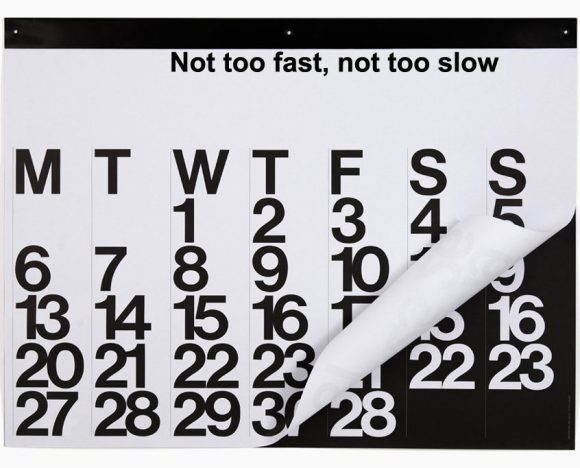
How long does it take to design a custom home?
It’s an excellent question, and one that is frequently asked of us. Although designing a home has a different set of requirements (and a different timeline) than the multi-family and commercial projects we design, we have found a cadence for single-family residential design that seems to generally fit most of our custom home projects. The timeline can vary between one architecture firm and the next; it depends heavily on the size and complexity of a residence and is contingent on the decision making ability of the owners. An earlier post took a detailed look at the stages of design, while today’s reviews the design timeline of a residence from the project kick-off to the completion of construction documents. We’ll also spell out some timesaving tips and efficiencies we’ve observed over the years. Take our method with a grain of salt, since the process outlined below is particular to BUILD, the nature of the projects we take on, and the character of the clients with whom we find a fit.
With a healthy roster of residences in our portfolio, we’ve noticed that there’s a crucial balance to the design schedule of every project, regardless of type. Too fast, and key decisions get discounted or building code provisions don’t get properly addressed. Not to mention the important benefit of clients having a bit more time to think things over. Too slow, and there’s a tendency to revisit stages that have already been successfully developed, risking the over-design of the project. We’ve found is that a steady rhythm along this process is hugely beneficial to both the schedule and thorough completion of a project.
And so we’re back to the initial question of how long this process should take. For those of you that can’t stand the suspense, the reveal is here at last: Once a potential client becomes an active client, we will typically spend about four months to design a custom home, including the specifying of fixtures and materials. Here’s the breakdown:
Initial Contact, Interview, Determining A Fit
The time involved in the initial conversations with a potential client and determining whether or not we’re a good fit for the project could take anywhere from a week to a couple of months. Some clients reach out to us for advice while they’re still looking for property, while others are ready to hit go when they contact us. Since an agreement has yet to be signed by either party at this point, the clock hasn’t started ticking. If the project, the clients, the budget, and the schedule are all in alignment, we proceed to the next phase.
Agreement and Questionnaire: 1 week
Once an agreement is signed, we deliver a questionnaire to the clients. This document is an organized account of the most important factors of a home and its environment to our clients. It allows them to document their goals, needs, and requirements, while making comparisons to their current or past environments. This document is usually returned in about a week.
Note: We often encourage our clients to use their current living space as a comparative guide. Clients likely don’t care for their current home (which is why they are hiring us), but the comparison offers fundamental insights into how they live, think, and communicate. These notes should be captured in the questionnaire.
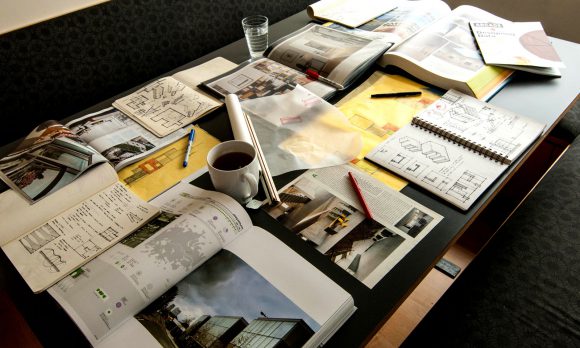
Information Gathering, Research, Documentation: 2-3 weeks
This is a highly involved phase of the project requiring site visits to document existing conditions, coordination with consultants (surveyors and possibly geotechnical engineers for technical reports), and meetings with the city to get clarity on zoning and building codes, as well as gathering city records on the property. The client questionnaire is reviewed as well as any additional material the clients may have communicated (this could be photos of inspiring projects or something they saw in a friend’s home). While it may take additional time for the consultants to submit their documents and reports, this phase is typically completed in 2-3 weeks.
Note: With the building industry as busy as it is, and with the building departments as swamped as they are, we’ll often submit for a project number during this phase. This gets our project in the city’s system, and allows for much of the pre-permit paperwork and time-sensitive activities (like the pre-application site visit) to occur. It ultimately positions us to secure a more favorable permit intake date, particularly in jurisdictions like the City of Seattle (currently two months out).
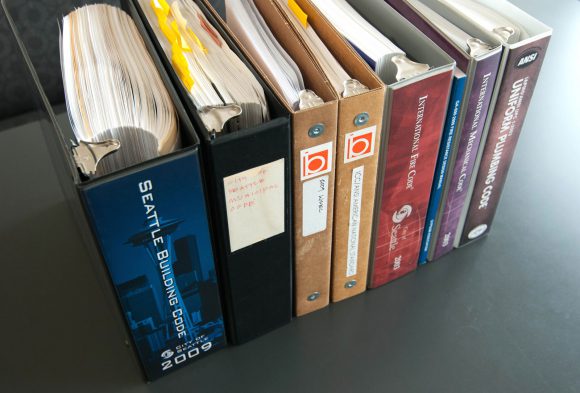
Schematic Design and Feasibility: 4-6 weeks
This is the fun part for us architects as we’re taking all of the data gathered from the previous phase, filtering through it, cross-referencing it, developing it, and finally, using it to generate diagrams of the project’s program. During this phase, meetings between BUILD and the clients are held, a variety of design concepts are reviewed, decisions are made, and diagrams evolve into three-dimensional objects. An overall design strategy is chosen and a target budget is established. There are typically 2 meetings involved with this phase requiring anywhere from 4 to 6 weeks.
Note: As mentioned above in the introduction, clients make more thoughtful decisions when they are able to take design ideas home and think them over for a few days to compare a proposed design to one’s current living environment. Ideally, clients should have the time to go through their daily routines while a proposed design is on simmer – it provides an opportunity to gut-check the design.
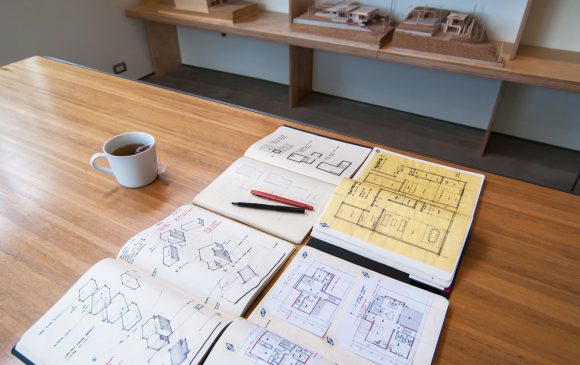
Design Development and Permit Documents: 4-5 weeks
The concepts, diagrams, and strategies become architecture in this phase as information from consultants, suppliers, and the trades is incorporated into the design. Building assemblies are figured out as structural and civil engineering documents are added to the set. The clients continue to make decisions at a more specific level and the specifications are developed (appliances, plumbing, electrical, materials). Approximately another 2 meetings are incorporated into this phase over some 4-5 weeks.
Note: With the overwhelming number of choices out there today, the temptation to look at too broad a spectrum of materials, fixtures, appliances, or to review and re-review decisions that have already been made is very real. Of course, if something doesn’t sit right, take another pass at it, but be aware of the lure of limitless options. Weighing every option available to find the perfect is a delusion. You hired that architect for a reason. The same qualities that lead clients to select a specific architect are also the ones at work when the specifications are carefully curated to the project and client.
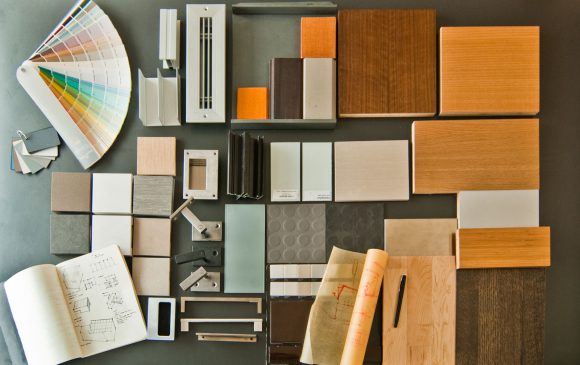
Construction Documents and Permit Submittal: 2-3 weeks
The drawings are completed to a level technical proficiency including details, building sections, and window & door schedules. Jurisdictional requirements are included, which may include information about storm water retention design, job site protection, and energy code requirements. Once the construction documents are finished, the design timeline is complete.
Note: We’ll often submit a set to the building department for permit review prior to the full construction document package being completed. There are a variety of details that aren’t relevant to the building department’s review involving material transitions, or finishes and colors of surfaces. This method shortens the overall timeline as the permit set starts its review at the building department while the design team wraps up the details of the construction documents.
Permit Review, Correction Cycles, and Permit Issuance
Permit review timelines vary so widely between one building department and the next, that all bets are off with regard to the permit review schedule. Lately we’ve noticed excessively long permit review times as building departments add new codes, new procedures, and even new departments. Permit correction cycles are often just as dependent on the individuals reviewing the permit set as the building department in question. The architecture team continues to work diligently to answer questions and respond to permit corrections until the permit is issued.
Other Possible Phases
There are several other categories which should be factored into the design timeline. These items can add weeks or even months to the overall design schedule, and it’s worth determining these variables as soon as possible in the design process so that they don’t become unexpected surprises later. Some additional design phases we’ve experienced on past projects are:
Community covenants which require community review and sign-off prior to permit submittal.
Planned communities which require presentation and approval from a design review board.
Utility approval from the governing water supplier.
Health department approval for septic systems.
Summary
Add up the basic phases of a project and a four month design schedule hits the equilibrium for most single-family residences that we design here at BUILD. This timeline gives the clients, the architects and the consultants adequate time to do their jobs, while keeping a steady and thorough pace. Like most everything else in the design and construction industry, balance is key.
Cheers from Team BUILD





